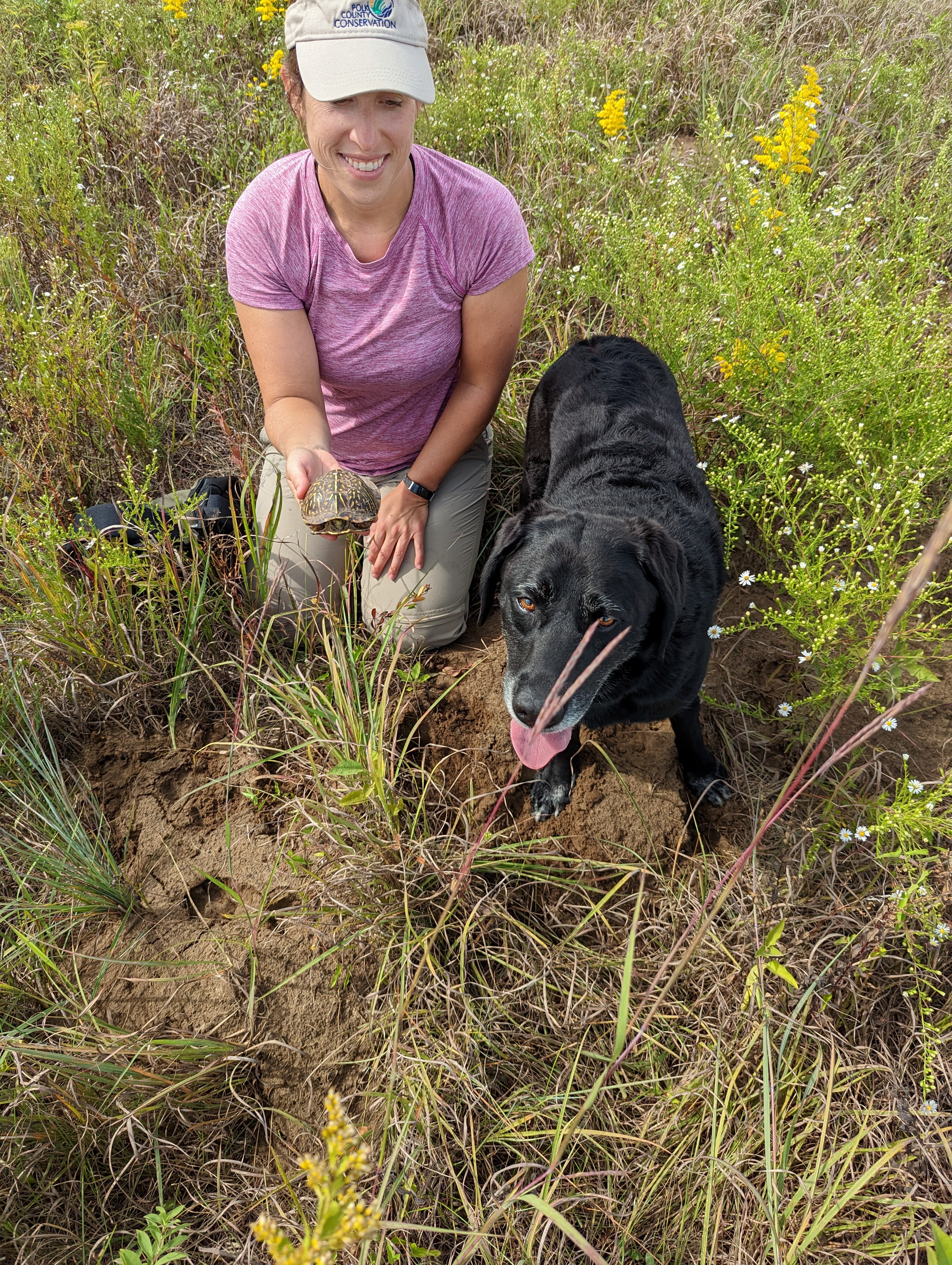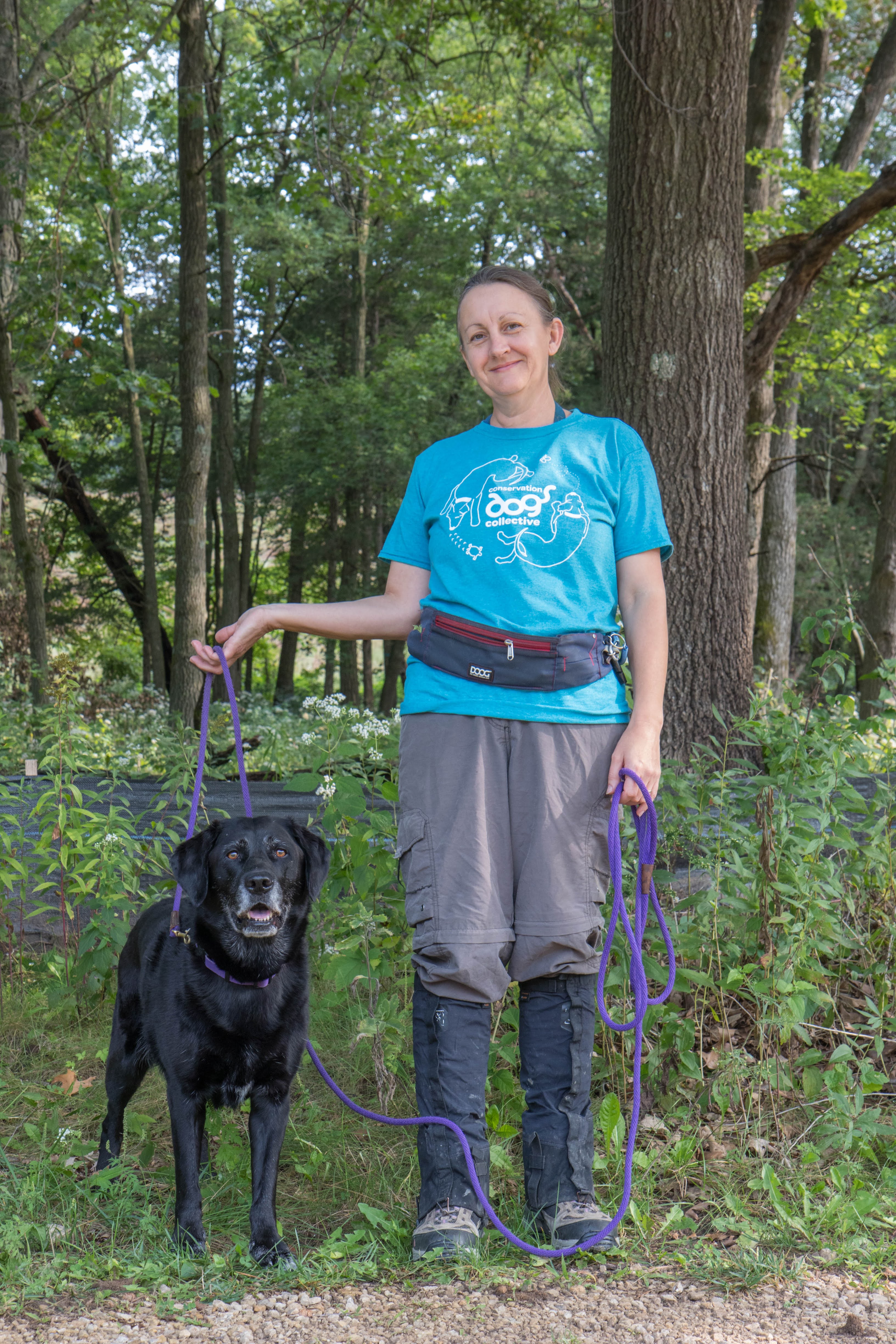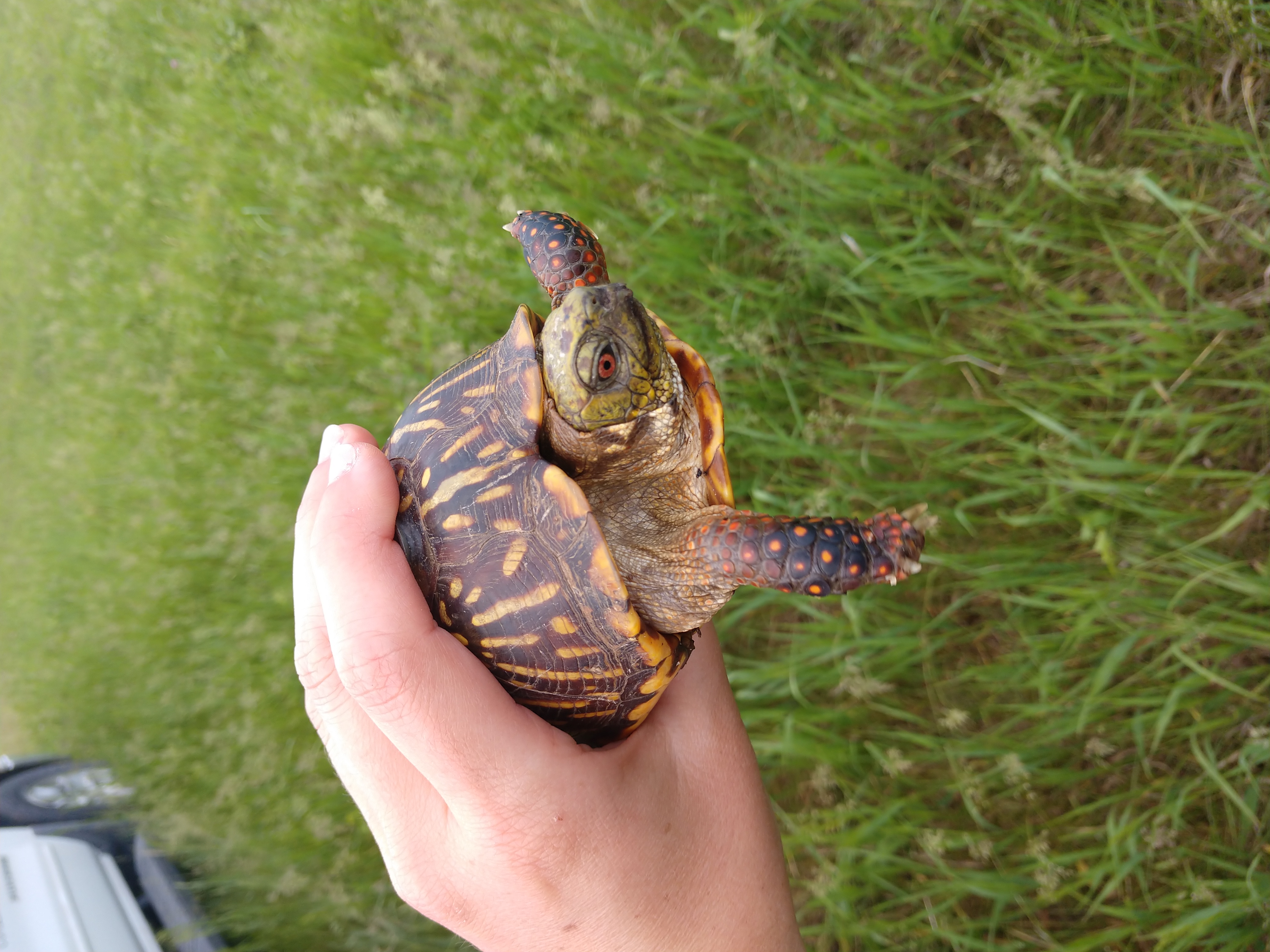Scent Detection Dogs: The Fluffy Face of Conservation
Published 3/16/2023 3:18:04 PM
As a part of the Ornate Box Turtle restoration effort, Polk County Conservation enlisted the help of conservation dogs. The world of working dogs is vast - from search and rescue, airport dogs, police canines, and even dogs who can sniff out diseases. The newest addition to the working canine scene is conservation dogs. Using scent detection dogs for conservation purposes is a relatively new practice, only being utilized the last 20 years.
While it is a newer field the results speak for themselves. Dogs can be trained to sniff out animals, plants, carcasses, and scat. They are able to traverse large areas of land, making them efficient and economical.
A team of Boykin Spaniels was first employed in May of 2022 to scour Chichaqua Bottoms Greenbelt for Ornate Box Turtles, and they found three of these reptiles. Then in September of 2022 the team of Willow, the k9, and Josephine Lock were employed from Conservation Dogs Collective Inc. (CDCI) to locate more turtles.
At CDCI their conservation dogs are called Finders while their human caretakers are called Keepers. Lock’s dog Willow was a search and rescue dog the first nine years of her career, finding missing people. She then was trained to find plants, animals, and even carcasses to aid conservation efforts.
Sadly, Willow recently passed away. Before she crossed the rainbow bridge, one of her last projects was training to find Ornate Box Turtles. She subsequently found two new turtles at Chichaqua, immensely helping Polk County Conservation's research team.
How are conservation dogs trained?
“Searching is a complex chain of behaviors and each of those skills need to be trained to fluency in order for the search to be successful,” said Lock.
The first step for any search dog is learning an alert. This is how the dog indicates to their human that they found the target odor. Once a dog is trained with this alert - such as sitting, or standing and pointing - they will use it to indicate they have found the target odor upon which they are trained.
The dog is then trained to alert the target odor through operant and classical conditioning. Trainers build odor relevance by correlating the smell to a treat or toy so the dog will want to search for it.
In addition to teaching the scent and alert, they must also learn resilience and stamina. In larger search areas the dog must be able to hold the alert long enough for their human to reach them. They also need other skills such as avoiding distracting stimuli and not attacking wildlife.
Before Josephine Lock brought Willow to search Chichaqua she put the dog through one final test after weeks of training. The Science Center of Iowa has an Ornate Box Turtle, so Willow’s test was to walk through the museum avoiding distracting stimuli such as kids, animatronics, and loud sounds to find the turtle. Willow passed successfully.
Why are dogs used for conservation efforts?
How was Willow able to find the turtle in the museum with all of those sights, sounds, and smells? How was she able to find turtles in the vast distracting wilderness?
It’s because dogs’ smelling abilities are their superpower. According to VCA Animal Hospitals, dogs have over 100 million smell receptor sights in their nose and nasal cavities, whereas humans only have 6 million. The portion of the brain that is responsible for processing smells is also over 40 times larger in dogs than in humans.
Executive Director of CDCI, Laura Holder explains, “We see the world in a wild spectrum of colors but they can smell it in an even bigger spectrum.”
Holder emphasizes that dogs are an untapped resource. Working dogs do not always need to be the high drive dogs seen in the police force or search and rescue. There is room for slower, methodical, thoughtful dogs to search and find any number of things. Who knows your dog at home may be a highly effective scent detection dog as well.
To learn more about Scent Detection Dogs in Conservation and CDCI visit https://www.conservationdogscollective.org/canine-finders-detection-dogs
To learn more about Ornate Box Turtles at Chichaqua Bottoms Greenbelt, check out the May edition of Polk County Conservation’s Nature News Magazine.



